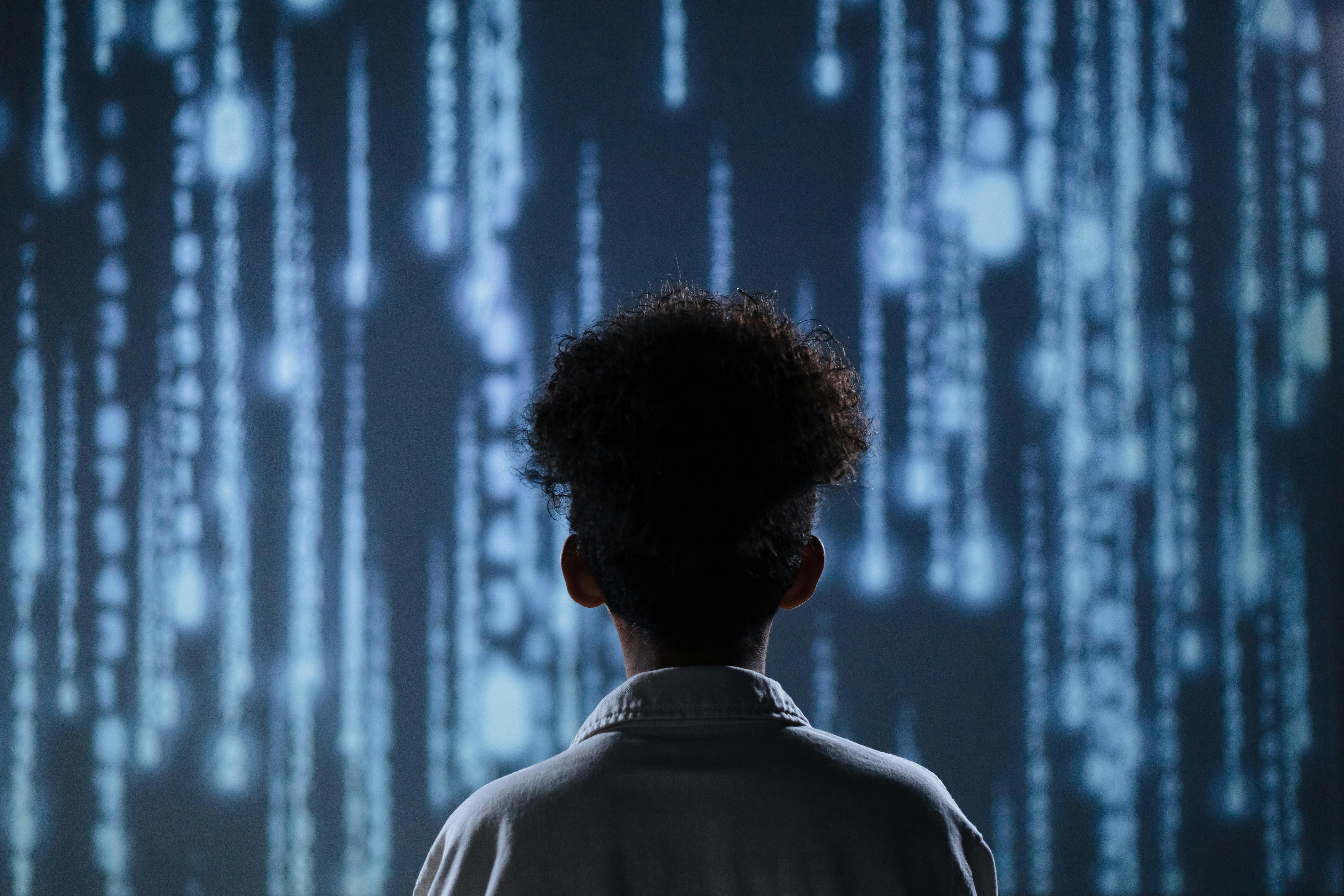How to Organize Class Project Groups to Support Our Students’ Future of Work #WanderlustEDU #FOW
In a gig-based economy our students will find themselves working on asynchronous teams in different geographies, different times, and with different cultures. How then can we prepare them for this workflow?
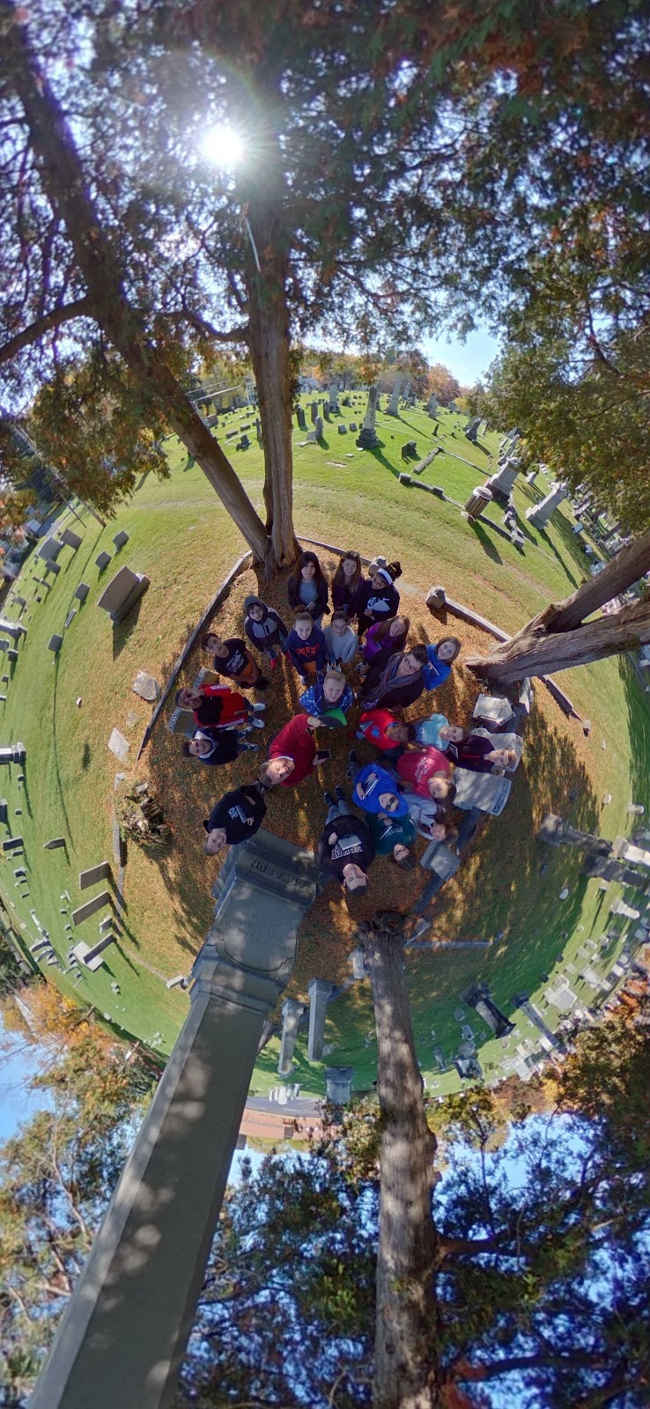
Innovation goes beyond a simple new tool, innovation infers application, capability, and methods of accomplishing a task… a better workflow. The Future Of Work will demand people are prepared to solve complex problems, interact with clients/colleagues, and be able to adapt to new tools and workflows. Over the next twenty years, we are likely to see a significant disruptions to the workforce and work as we know it in recent memory.(1) 54% of the US workforce says they are not confident their job would still exist in 20 years (2)… a scary self-reflection that must inform our instructional practice. Where is all of this change coming from?
The demographic and socioeconomic trends of the past decade, like rapid urbanization and globalization, coupled with even faster advances in technology from mobile internet to increased automation and machine learning have caused a disruption like never before.(1) Are we preparing our students to be ready for this shift in the workplace?
A trend toward a gig economy has begun. A study by Intuit predicted that by 2020, 40 percent of American workers would be independent contractors.(3) A gig based economy is defined as a way of working that is based on people having temporary jobs or doing separate pieces of work, each paid separately, rather than working for an employer.(4) Contractors developing their own brand in a feast-or-famine work atmosphere must understand collaboration, resilience, perseverance… good ol fashioned sticktoittiveness!
Asynchronous working teams
In a gig-based economy our students will find themselves working on asynchronous teams in different geographies, different times, and with different cultures. How then can we prepare them for this workflow? Traditional, synchronous, “group work” has us creatively organize students in, what we believe will be effective working teams. I have been delegating these types of groups for twenty years as well as allowing students to pick their own teams (groups). I have also helped organize my students into teams and assign specific tasks to each person in the team. This makes a student the team “expert” in a given area on the project. But I ask myself: How often is this type of teams work going to happen for my students in their future? The keypoint being their future rather than organizing them according to my past.
Asynchronous working teams are more likely what our students will be working in more often, in their future. Recently, I arranged my five social studies classes into asynchronous teams. We were working on a community-based project to document our local cemetery. The Liverpool Cemetery project has always been a favorite of mine, since the history found just a half-mile from my school relates directly to the content I teach. Each year we iterate on the following years work and ask my students to improve and grow our documentation of this local treasure by assigning groups of students specific gravesites to investigate and provide a relevant historical narrative for the people buried so close to our school.
This year I took the 30 or so sites and assigned them in everyone of my five classes. A student in my first class might be investigating site #4 and #5 and a student in my other four classes would also be assigned those sites.
Tech & Learning Newsletter
Tools and ideas to transform education. Sign up below.
Each class was given a specific job that they needed to complete as the expert. In each class I would provide the necessary support for how to use various tools to complete the jobs. The common tasks for each class were:
- to identify sources by keeping a research notebook
- to use a shared Google Drive on our school iPads to take pictures of the sites.
- Share a Google Slide deck of all the work being completed to track progress and communicate needs
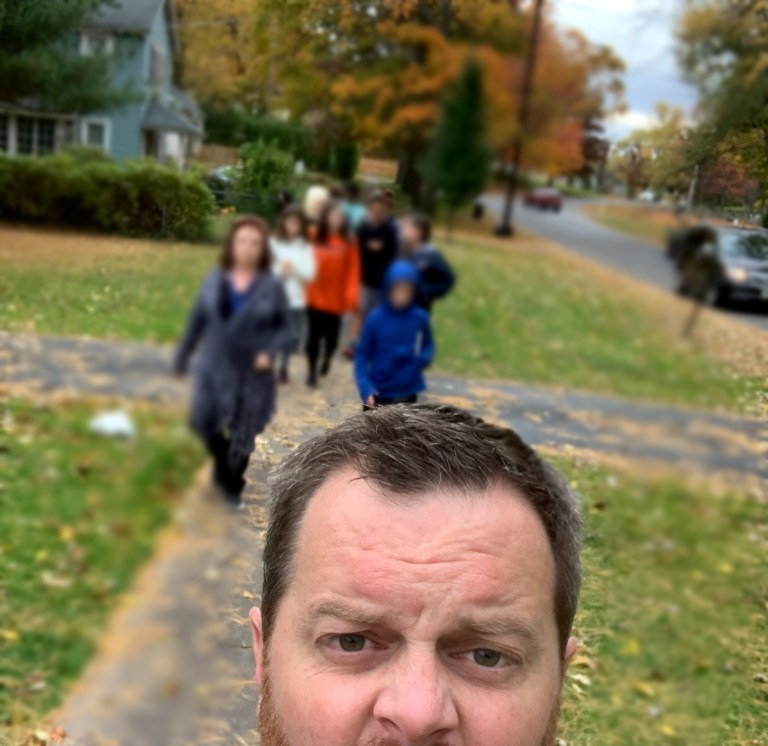
The project included a walk to the cemetery with each of the classes during one of our 80 minute blocks.
In class, students were organized and given direction by their project managers (in a different class). The project managers, and I, would review the work completed on the Google Slide deck and use the comment feature to assign work that needed to be completed.
| Class Period | Students studying site(s) #4 and #5 | Job |
| 1 | …… | Timeline: 10 events that occurred during the person(s) life. |
| 3 | …… | Biographical sketch: A narrative of what life was like for the person(s) in our community. |
| 4 | …… | Slideshow: What the person(s) would have seen while they were alive |
| 7 | …… | Movie: Create a 45 second Adobe Spark Video about your person. |
| 9 | …… | Project Manager: Assign tasks and details to keep the other students working efficiently |
The project managers were coached on specific kinds of productive feedback (see “Assigned to” boxes below:
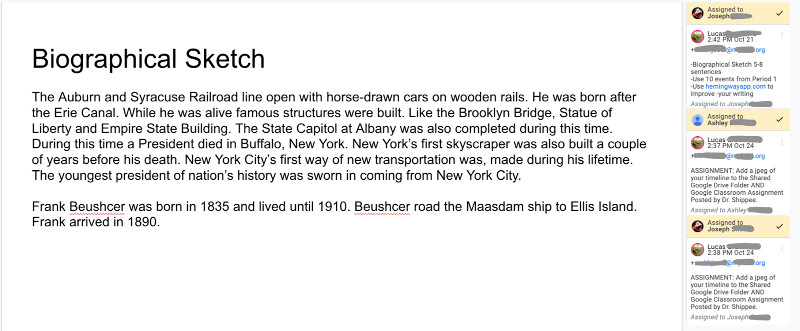

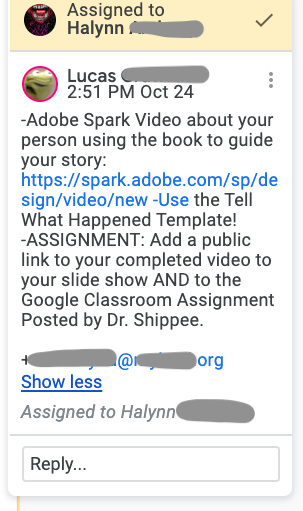
The completed task components were compiled on a website we built. My plan is to continue to iterate on this website with my future classes.
It was interesting to hear from the students following this new group dynamic. Here’s what they had to say: “The biggest thing I learned about this type of group work is….”
- “you have to rely on all your classmates. If your classmates didn’t do the work properly it affects you because you don’t know the answer. And you have to be in communcation with all your team members so you understand fully what each teammate expects from each other.”
- “you rely on your partners a lot and when they don’t do their job like you did yours it’s disappointing and throws the whole project off.”
- “how people can indirectly help you on certain things, creating this chain of other peoples work helping someone else’s work to create something special.”
A heavy focus of student responses was on the value of communication and transparency. Students wanted to hear from each other and be able to see each other’s progress… more than actually seeing each other. Dissenting opinions were expressed as well: “I did not like not seeing my partners.”
Perhaps most insightful was a more descriptive student response:
“The biggest thing I learned is it can be AGONIZINGLY PAINFUL when only one person does their work. All I got from everyone but Sam was nothing. I got a timeline after it was due and wasn’t able to put it on the website. Julie was sick, so I can cut her some slack. However I never got wind of any slideshow(s). I can understand why teachers get so angry when we don’t do work. It is so frustrating and makes me want to scream! Sam was the exception turning in all his work to me and doing a great job at that.”
Ah, middle school… refreshing honesty through empathetic experience!
Conclusion
Clearly a technology-driven shift education is upon us and will greatly impact the future of work for our students. This shift demands a different approach to the knowledge and skills we have relied on in the past. Our need to adopt emergent technology, and meaningfully pedagogy to leverage it, has never been this high.
Our shifts must transcend simply integrating new technology in our instruction. We must have adopt innovativeness (a mindset that embraces change) in order to prepare our students for a future with a gig-based economy and it’s demands for new productive workflows. Helping our students understand the importance of embracing a constant state of change will help them ride out the dark valleys knowing successful mountaintops are coming.
cross posted at micahshippee.com
Micah Shippee, PhD is an out-of-the-box-doer, a social studies teacher, and a technology trainer. He works to bridge the gap between research and practice in the educational sector. Micah explores ways to improve motivation in the classroom and seeks to leverage emergent technology to achieve educational goals. As an innovative "ideas" person, Micah likes to think, and act, outside the box. Micah is motivated and energetic, taking a creative approach towards achieving goals. As an Educational Consultant, and Keynote Speaker, he focuses on the adoption of emergent technology through the development of an innovative learning culture. Micah believe that innovativeness is the pedagogy of the future.
Sources
1. Tunkel, A. “Three Trends On The Future Of Work.” Forbes. 13 Aug. 2018. https://www.forbes.com/sites/forbesbusinessdevelopmentcouncil/2018/08/13/three-trends-on-the-future-of-work/. Accessed 8 Dec. 2018.
2. Inc., Wonolo. “Data on the Gig Economy and How it is Transforming the Workforce.” Wonolo. 15 Feb. 2018. https://www.wonolo.com/blog/data-gig-economy-transforming-workforce/. Accessed 8 Dec. 2018.
3. Rouse, M. “What is gig economy? – Definition from WhatIs.com.” WhatIs.com. https://whatis.techtarget.com/definition/gig-economy. Accessed 8 Dec. 2018.
4. “GIG ECONOMY | definition in the Cambridge English Dictionary.” Dictionary.cambridge.org. https://dictionary.cambridge.org/us/dictionary/english/gig-economy. Accessed 10 Jan. 2019.
